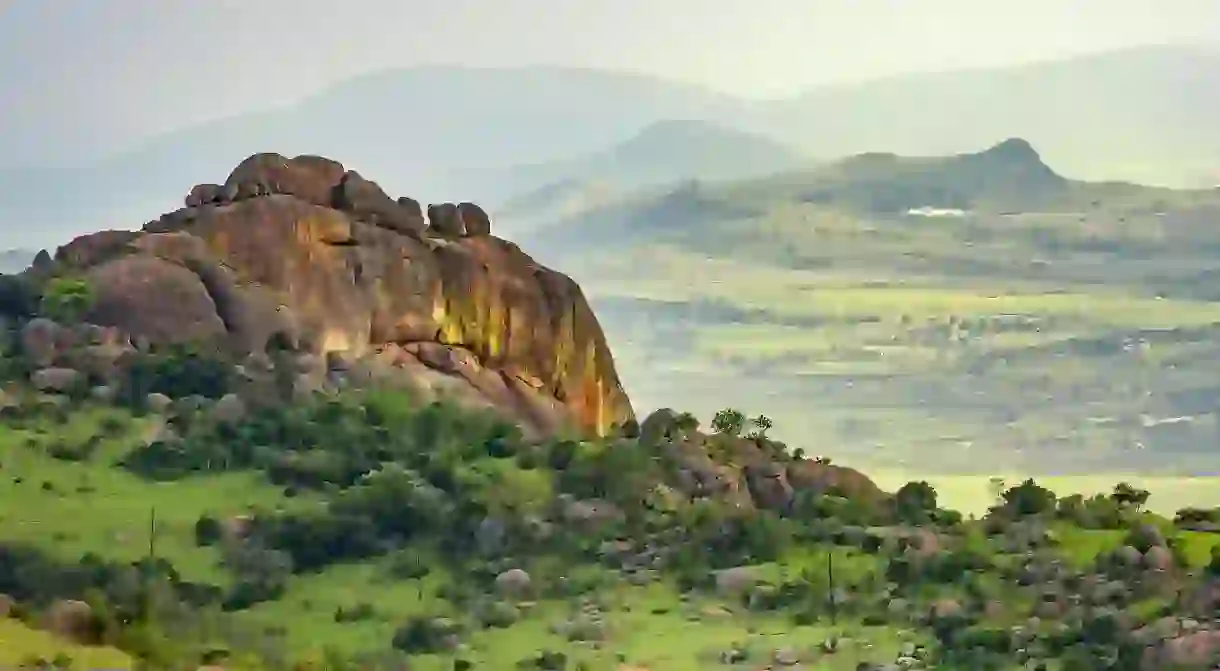The Best Hikes and Walks in eSwatini

eSwatini is great destination for exploring nature reserves and soaking up the picturesque scenery: from forests and fields to ancient rock formations, gorges, rivers and waterfalls.
Did you know – Culture Trip now does bookable, small-group trips? Pick from authentic, immersive Epic Trips, compact and action-packed Mini Trips and sparkling, expansive Sailing Trips.
Emlembe Mountain
Hiking Trail
The highlight of Bulembu’s many walks and hikes is the approximately four-hour climb up Emlembe: eSwatini’s highest mountain. The mountain is found in the Hhohho region on the border of South Africa and rises to 1,862 metres (6,110 feet) at its peak. Locals are on hand for guided treks and there are also easier strolls around Bulembu, and opportunities to visit the nearby homestead, Malanda, if the mountain climb is too taxing.
Malolotja Nature Reserve
Hiking Trail, Natural Feature

The mountainous Malolotja Nature Reserve is the largest highveld reserve in the country and, arguably, offers eSwatini’s best hiking opportunities. The 18,000-hectare (44,000-acre) park has a number of marked trails (200km (120mi) of them, to be precise) and 15 camps, so hikers can plan anything from a leisurely stroll to longer, more challenging trails of up to seven days. The flora and fauna on display is what makes this reserve so special, including critically endangered plants, as well as the endangered pangolin and several small mammals that can’t be found elsewhere in the country.
Ngwempisi Wilderness Area
Hiking Trail
Keen hikers prefer the little-visited Ngwempisi Wilderness. In this rugged expanse of countryside, the Ngwempisi river cuts through the Ntfungulu hills creating a dramatic 20km (12mi) gorge. Because of this, the hiking here is more strenuous, but this is made up for by its astonishing beauty. Be prepared to rough it as the Kopho Lodge accommodation, while memorable for its views over the Ngwempisi river, is rather simple.
Sibebe Rock
Natural Feature

It wouldn’t be a trip to eSwatini without a visit to the renowned Sibebe Rock: the largest granite dome on the planet. Take a leisurely hike up the mountain (about half an hour) or choose to climb one of the steeper rock faces if you’re after more of a challenge, but be careful in wet weather as it can become very slippery. Whichever route you take, the spectacular views from the top will be worth it.
Shewula
Hiking Trail

The 2,650ha (6,550 acre) Shewula Nature Reserve, is a community-owned and managed conservation and eco-tourism project. Tourists staying at the Shewula Mountain Camp, perched on top of the Lubombos, will be rewarded with incredible views across eSwatini – on a clear day, it’s possible to see the Indian Ocean. Here, it’s possible to organise guided nature walks down to the Mbuluzi Gorge and lower-lying reserves or a walk around the local village to see their daily life, interact with the locals and enjoy a communal Swati meal and dance display.
Mlawula Nature Reserve
Hiking Trail
Mlawula Nature Reserve, in north-east eSwatini, is an unspoilt wilderness full of flora and fauna. The area has 50km (30mi) of trails to choose from – these various hiking routes range from short walks to two-day trails that require an overnight stay. There are fewer facilities than some of the other nature reserves in eSwatini, so hikers should bring essential items and plenty of water. It’s possible to trek across the park on foot without a guide and there’s a high chance of encountering its animal residents while exploring.
The Gap
Hiking Trail
The Nkomati Valley has a mix of moderate-to-more-challenging hikes of various lengths: usually starting from Maguga Lodge. The real highlight is the unusual formation of the Komati River. At one point, the river then plummets completely out of sight and vanishes into a channel a full metre wide, hence its name: The Gap.
Mahamba Gorge
Hiking Trail, Natural Feature

Escape the more touristy areas and take a trip to the stunningly serene Mahamba Gorge in south-west eSwatini. While startlingly beautiful, the gorge receives much fewer visitors than some of the country’s better known landscapes. There are several trails to explore the Mkondvo River and climb up the sides of the gorge; birdwatchers might also be lucky enough to spot the rare southern bald ibis. It’s even possible to stay overnight in self-catering cabins, which are managed by a local community project.













